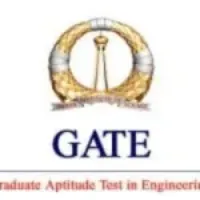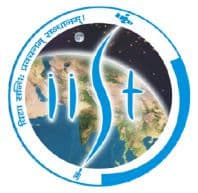Latest Applications Open 2024:
GATE 2025 Syllabus of Chemistry has been Released. GATE 2025 is a national-level exam organized by IIT Roorkee. The Engineering Graduation Skill Test (GATE) is organized for admission to PG courses in engineering and technology, specifically ME/M.Tech. The GATE 2025 program will be prescribed by the authority responsible for the examination.
In this article, GATE Syllabus 2025 has been provided for the students and aspirants with a Paper code for all the branches Also, GATE 2025 Exam Pattern is provided.
GATE 2025 is a national-level exam organized by IIT Roorkee. The Engineering Graduation Skill Test (GATE) is organized for admission to PG courses in engineering and technology, specifically ME / M.Tech.
GATE 2025 Chemistry Syllabus – PDF Released
GATE 2025 Chemistry Syllabus has been Released. Click to Download Chemistry Syllabus Pdf.
Section 1: Physical Chemistry
Structure:
Postulates of quantum mechanics. Time-dependent and time-independent Schrodinger equations. Born interpretation. Particle in a box. Harmonic oscillator. Rigid rotor. Hydrogen atom: atomic orbitals. Multi-electron atoms: orbital approximation. Variation and first-order perturbation techniques. Chemical bonding: Valence bond theory and LCAO-MO theory. Hybrid orbitals. Applications of LCAO-MOT to H2+, H2, and other homonuclear diatomic molecules, heteronuclear diatomic molecules like HF, CO, NO, and to simple delocalized n- electron systems.
Huckel approximation and its application to annular n – electron systems. Symmetry elements and operations. Point groups and character tables. Origin of selection rules for rotational, vibrational, electronic, and Raman spectroscopy of diatomic and polyatomic molecules. Einstein coefficients. Relationship of transition moment integral with molar extinction coefficient and oscillator strength. Basic principles of nuclear magnetic resonance: nuclear g factor, chemical shift, nuclear coupling.
Equilibrium:
Laws of thermodynamics. Standard states. Thermochemistry. Thermodynamic functions and their relationships: Gibbs-Helmholtz and Maxwell relations, can’t Hoff equation. Criteria of spontaneity and equilibrium. Absolute entropy. Partial molar quantities. Thermodynamics of mixing. Chemical potential. Fugacity, activity, and activity coefficients. Chemical equilibria. Dependence of equilibrium constant on temperature and pressure. Non-ideal solutions. Ionic mobility and conductivity. Debye-Huckel limiting law. Debye-Huckel-Onsager equation. Standard electrode potentials and electrochemical cells.
Potentiometric and conductometric titrations. Phase rule. Clausius- Clapeyron equation. Phase diagram of one-component systems: CO2, H2O, S; two-component systems: liquid-vapor, liquid-liquid, and solid-liquid systems. Fractional distillation. Azeotropes and eutectics. Statistical thermodynamics: microcanonical and canonical ensembles, Boltzmann distribution, partition functions, and thermodynamic properties.
Kinetics:
Transition state theory: Eyring equation, thermodynamic aspects. Potential energy surfaces and classical trajectories. Elementary, parallel, opposing, and consecutive reactions. Steady-state approximation. Mechanisms of complex reactions. Unimolecular reactions. Kinetics of polymerization and enzyme catalysis. Fast reaction kinetics: relaxation and flow methods. Kinetics of photochemical and photophysical processes.
Surfaces and Interfaces:
Physisorption and chemisorption. Langmuir, Freundlich, and BET isotherms. Surface catalysis: Langmuir-Hinshelwood mechanism. Surface tension, viscosity. Self-assembly. Physical chemistry of colloids, micelles, and macromolecules.
Section 2: Inorganic Chemistry
Main Group Elements:
Hydrides, halides, oxides, oxoacids, nitrides, sulfides – shapes and reactivity. Structure and bonding of boranes, carboranes, silicones, silicates, boron nitride, borazines, and phosphazenes. Allotropes of carbon. Chemistry of noble gases, pseudohalogens, and interhalogen compounds. Acid-base concepts.
Transition Elements:
Coordination chemistry – structure and isomerism, theories of bonding (VBT, CFT, and MOT). Energy level diagrams in various crystal fields, CFSE, applications of CFT, Jahn-Teller distortion. Electronic spectra of transition metal complexes: spectroscopic term symbols, selection rules, Orgel diagrams, charge-transfer spectra. Magnetic
properties of transition metal complexes. Reaction mechanisms: kinetic and thermodynamic stability, substitution and redox reactions.
Lanthanides and Actinides:
Recovery. Periodic properties, spectra, and magnetic properties.
Organometallics:
18-Electron rule; metal-alkyl, metal-carbonyl, metal-olefin, and metal-carbene complexes and metallocenes. Fluxionality in organometallic complexes. Types of organometallic reactions. Homogeneous catalysis – Hydrogenation, hydroformylation, acetic acid synthesis, metathesis, and olefin oxidation. Heterogeneous catalysis – Fischer- Tropsch reaction, Ziegler-Natta polymerization.
Radioactivity:
Decay processes, the half-life of radioactive elements, fission, and fusion processes.
Bioinorganic Chemistry:
Ion (Na+ and K+) transport, oxygen binding, transport and utilization, electron transfer reactions, nitrogen fixation, metalloenzymes containing magnesium, molybdenum, iron, cobalt, copper, and zinc.
Solids:
Crystal systems and lattices, Miller planes, crystal packing, crystal defects, Bragg’s law, ionic crystals, structures of AX, AX2, ABX3 type compounds, spinels, band theory, metals, and semiconductors.
Instrumental Methods of Analysis: UV-visible spectrophotometry, NMR and ESR
spectroscopy, and mass spectrometry. Chromatography including GC and HPLC. Electroanalytical methods- polarography, cyclic voltammetry, ion-selective electrodes. Thermoanalytical methods.
Section 3: Organic Chemistry
Stereochemistry:
Chirality of organic molecules with or without chiral centres and determination of their absolute configurations. Relative stereochemistry in compounds having more than one stereogenic centre. Homotopic, enantiotopic and diastereotopic atoms, groups, and faces. Stereoselective and stereospecific synthesis. Conformational analysis of acyclic and cyclic compounds. Geometrical isomerism. Configurational and conformational effects, and neighboring group participation on reactivity and selectivity/specificity.
Reaction Mechanisms:
Basic mechanistic concepts – kinetic versus thermodynamic control, Hammond’s postulate and Curtin-Hammett principle. Methods of determining reaction mechanisms through identifying products, intermediates, and isotopic labelling.
Nucleophilic and electrophilic substitution reactions (both aromatic and aliphatic). Addition reactions to carbon-carbon and carbon-heteroatom (N, O) multiple bonds. Elimination Reactions. Reactive intermediates – carbocations, carbanions, carbenes, nitrenes, arynes, and free radicals. Molecular rearrangements involving electron-deficient atoms.
Organic Synthesis:
Synthesis, reactions, mechanisms, and selectivity involving the following classes of compounds – alkenes, alkynes, arenes, alcohols, phenols, aldehydes, ketones, carboxylic acids, esters, nitriles, halides, nitro compounds, amines, and amides. Uses of Mg, Li, Cu, B, Zn, and Si-based reagents in organic synthesis. Carbon-carbon bond formation through coupling reactions – Heck, Suzuki, Stille, and Sonogoshira. Concepts of multistep synthesis – retrosynthetic analysis, strategic disconnections, synthons, and synthetic equivalents.
Umpolung reactivity – formyl and acyl anion equivalents. Selectivity in organic synthesis – chemo-, regio- and stereoselectivity. Protection and deprotection of functional groups. Concepts of asymmetric synthesis – resolution (including enzymatic), desymmetrization, and use of chiral auxiliaries. Carbon-carbon bond-forming reactions through enolates (including boron enolates), enamines, and silyl enol ethers. Michael’s additional reaction. Stereoselective addition to C=O groups (Cram and Felkin-Anh models).
Pericyclic Reactions and Photochemistry:
Electrocyclic, cycloaddition and sigmatropic reactions. Orbital correlations – FMO and PMO treatments. Photochemistry of alkenes, arenas, and carbonyl compounds. Photooxidation and photoreduction. Din-methane rearrangement, Barton reaction.
Heterocyclic Compounds:
Structure, preparation, properties, and reactions of furan, pyrrole, thiophene, pyridine, indole, quinoline and isoquinoline.
Biomolecules:
Structure, properties, and reactions of mono- and disaccharides, physicochemical properties of amino acids, chemical synthesis of peptides, structural features of proteins, nucleic acids, steroids, terpenoids, carotenoids, and alkaloids.
Spectroscopy:
Applications of UV-visible, IR, NMR, and Mass spectrometry in the structural determination of organic molecules.
Other GATE Related Syllabus PDF
If you any queries regarding the GATE 2025 Chemistry Syllabus, you can ask your query and leave comments below.

As a dedicated Biology Science graduate, I’m passionate about sharing the latest updates in national and state entrance exams through my blog. I aim to keep aspiring students informed about exam trends, important dates, and changes in syllabi. With a keen interest in education, I strive to offer valuable insights for students navigating the competitive landscape of entrance examinations and admission tests. Stay updated with me.


